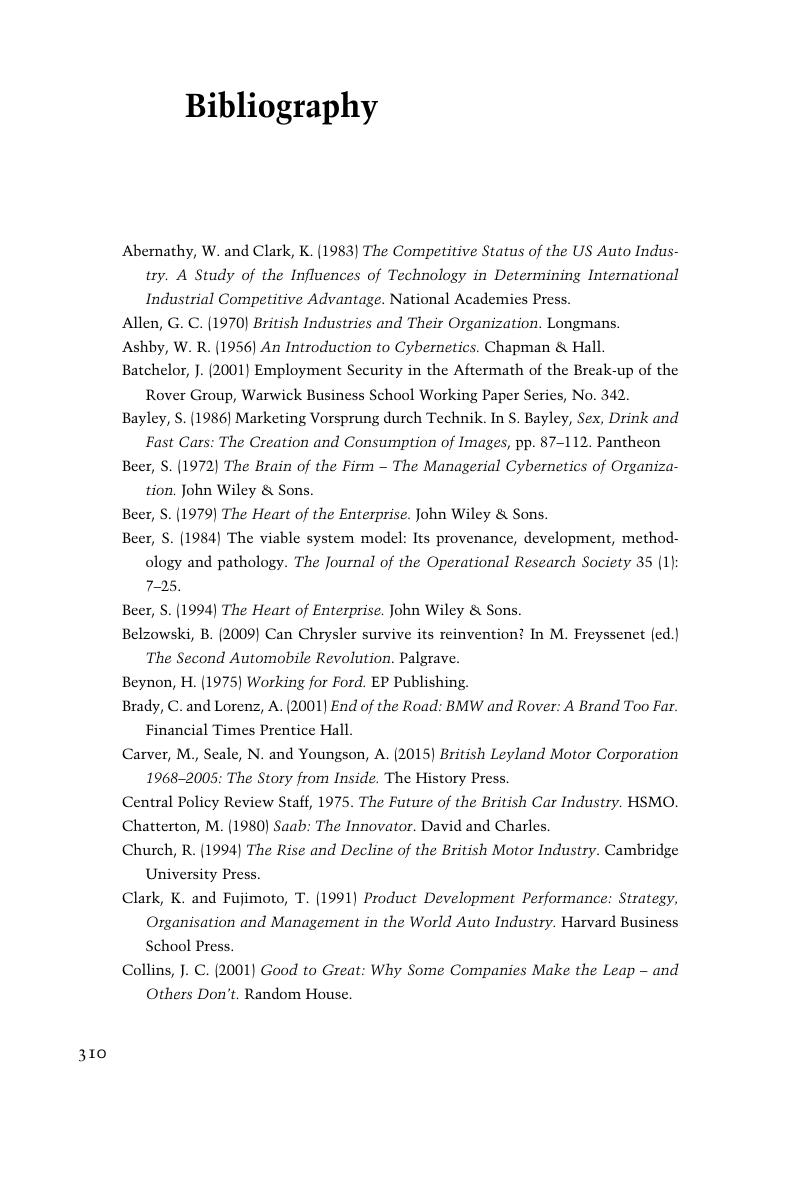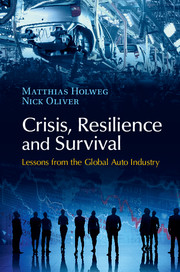Book contents
- Frontmatter
- Dedication
- Contents
- List of figures
- List of tables
- Acknowledgements
- 1 Why a book on corporate resilience?
- 2 The evolution of a global industry
- 3 Competing in a global industry
- 4 Concepts: Stakeholders, operations and context
- 5 Rover: Inside a failing car company
- 6 The failure of Saab Automobile
- 7 Near misses: Chrysler and Nissan
- 8 The future shape of the industry
- Appendix
- Notes
- Bibliography
- Secondary data sources
- Index
- References
Bibliography
Published online by Cambridge University Press: 05 December 2015
- Frontmatter
- Dedication
- Contents
- List of figures
- List of tables
- Acknowledgements
- 1 Why a book on corporate resilience?
- 2 The evolution of a global industry
- 3 Competing in a global industry
- 4 Concepts: Stakeholders, operations and context
- 5 Rover: Inside a failing car company
- 6 The failure of Saab Automobile
- 7 Near misses: Chrysler and Nissan
- 8 The future shape of the industry
- Appendix
- Notes
- Bibliography
- Secondary data sources
- Index
- References
Summary

- Type
- Chapter
- Information
- Crisis, Resilience and SurvivalLessons from the Global Auto Industry, pp. 310 - 317Publisher: Cambridge University PressPrint publication year: 2015



